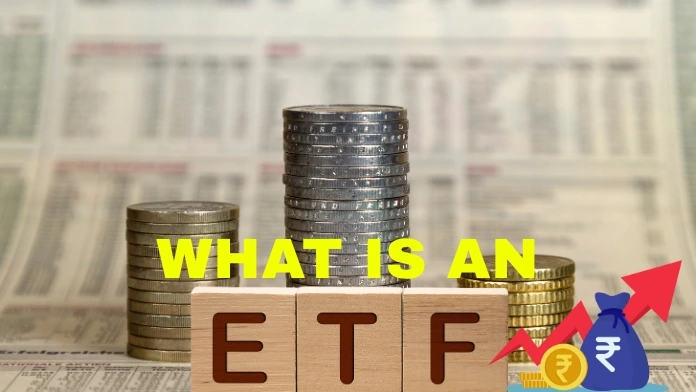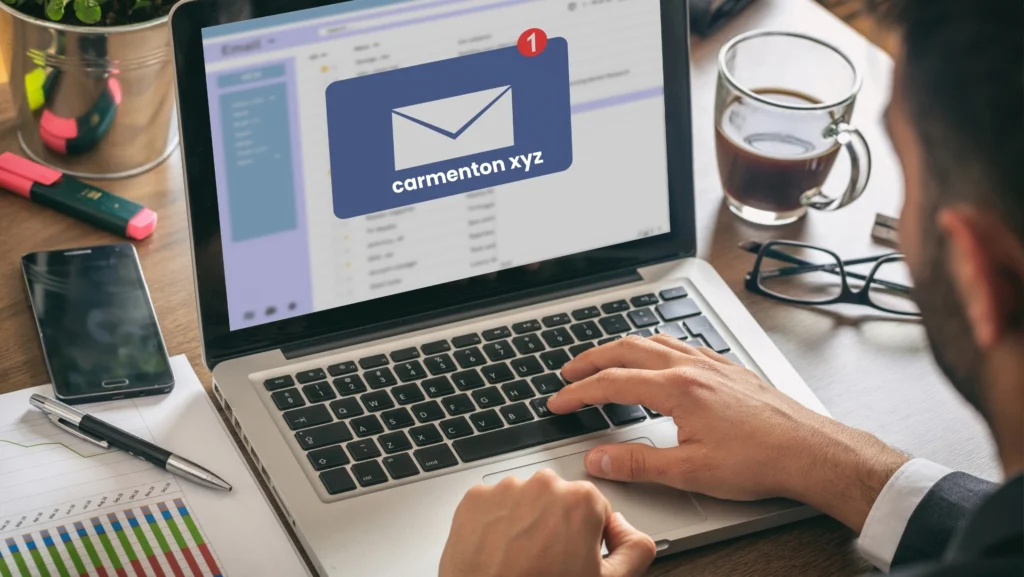Let’s face it—investing can feel like trying to learn a foreign language. Stocks, bonds, mutual funds… and then there’s that one term people keep tossing around like it’s common knowledge: what is an ETF? If you’ve ever nodded along in a conversation, secretly wondering what on earth an ETF actually is, you’re definitely not alone.
I used to think investing meant picking a few stocks, crossing my fingers, and hoping I didn’t mess up. It felt like gambling with a suit on. That all changed when I found out about ETFs. It wasn’t love at first sight—but it was the first time investing made any real sense.
So, What Is an ETF in Plain English?
Alright, let’s break it down. What is an ETF, really? It stands for Exchange-Traded Fund—but forget the technical name for a second. Imagine a basket full of different investments. When you buy an ETF, you’re basically buying that entire basket in one go.
Instead of choosing just one company to invest in, you’re getting little pieces of a bunch of them. Think of it like buying a fruit salad instead of a single apple. If one fruit goes bad, the rest still hold up. That’s the idea behind ETFs—they give you variety without extra effort.
And here’s something cool: you can trade ETFs on the stock market just like you would with regular stocks. No need to wait for the end of the day like you do with mutual funds. You’re in control the entire time the market’s open.
How Is an ETF Different From a Mutual Fund?
At first glance, ETFs and mutual funds seem similar. They both group together a mix of investments. But here’s the real difference—and what is an ETF’s unique edge? Flexibility and cost.
ETFs can be bought or sold anytime during market hours, just like a stock. Mutual funds, on the other hand, only execute your trade once the market closes. So if the market’s doing flips during the day, you have no say with mutual funds until it’s all over.
ETFs also tend to be cheaper to own. They don’t require high fees for fund managers trying to outsmart the market. That means more of your money actually stays invested and less goes to management costs.
What Is an ETF Made Of, Anyway?
Let’s say you’re curious about what’s actually inside one of these things. So again—what is an ETF composed of? Well, it depends. Some ETFs hold stocks from big, well-known companies. Others might focus on government or corporate bonds.
There are even ETFs that track specific themes or industries—like green energy, technology, or healthcare. You can go broad with something that follows the entire U.S. market, or get niche with one that focuses on, say, clean water initiatives. There’s something for just about every interest.
The best part? You don’t have to know everything about every stock in the ETF. You’re buying into a smartly curated mix. That’s a huge relief if you’re not into researching company balance sheets in your spare time.
Why ETFs Are Great for Long-Term Investing
If you’re looking to build wealth over time—slow and steady—ETFs are a solid foundation. So what is an ETF doing behind the scenes that makes it great for the long haul? For starters, it gives you instant diversification.
Instead of risking everything on one or two stocks, you’re spreading your money across dozens or even hundreds of companies. That’s like having a team instead of a solo player—you’ve got backup if one slips up.
Plus, most ETFs don’t require you to constantly watch the market or rebalance your portfolio every week. They’re built for “set it and forget it” investing. You buy it, hold onto it, and let it do its thing.
What Is an ETF’s Secret to Low Fees?
Fees may not sound like a big deal—until you realize how much they can eat into your returns over the years. So what is an ETF doing differently to keep costs low? It all comes down to passive management.
Most ETFs simply follow an index. That means there’s no high-paid fund manager trying to outsmart the market with fancy predictions. It’s just quietly mirroring something like the S&P 500—and that’s usually more effective anyway.
Because of this, many ETFs have expense ratios so low it almost feels like a typo. Some charge as little as 0.03% annually. That’s just a few bucks a year for every $10,000 you invest—basically a rounding error.
A Simple ETF Strategy for Total Beginners
Let’s say you’re just getting started. You’ve saved a little cash, and you want to invest—but you don’t want to mess it up. So what is an ETF strategy that works when you’re brand new to all this?
Start with a simple combo. One ETF that covers the entire U.S. market, one for international exposure, and maybe a bond ETF to soften the ride. That’s it. With just a few smart picks, you’ve got a balanced, global portfolio.
The beauty is, you don’t need to be a Wall Street expert. Just start small, keep it simple, and learn as you go. ETFs make it easy to take that first step without feeling overwhelmed.
What Is an ETF’s Downside?
No investment is perfect, and ETFs are no exception. So what is an ETF risk you should know about? Like anything tied to the stock market, ETFs rise and fall with the market itself. There will be bad days.
Also, not all ETFs are created equal. Some chase trends or narrow niches that might not hold up long-term. If you go with something overly specific—like an ETF focused on cannabis companies or blockchain startups—you might be in for a wild ride.
The key is to read the fine print. Stick with broad, reputable ETFs unless you really know the niche you’re diving into. A little research goes a long way.
What Is an ETF Dividend, and Why Should You Care?
Here’s something a lot of people don’t realize—some ETFs actually pay you. Yep, cash. So what is an ETF dividend and how does it work?
If the companies inside your ETF pay dividends, that income often gets passed on to you. You might get a payment every few months, or it could be reinvested automatically—depending on how your account is set up.
There are even entire ETFs built around dividend-paying companies, which can be a great way to add some passive income to your portfolio. It’s a nice bonus, especially when the market’s just treading water.
Popular ETFs for First-Time Investors
If you’re wondering where to start, you’re not alone. So what is an ETF that new investors often choose? Here are some popular examples that tend to show up in beginner portfolios.
- VTI – Covers the entire U.S. stock market.
- VOO – Tracks the S&P 500.
- BND – Focuses on U.S. bonds.
- VEA – Targets developed countries outside the U.S.
- QQQ – Leans into major tech companies.
These aren’t official recommendations, just common starting points. The point is—there’s likely an ETF out there that fits your goals, no matter where you’re starting from.
Why ETFs Might Beat Picking Individual Stocks
Now, some folks still love picking their own stocks—and that’s fine if you enjoy the challenge. But for most people? What is an ETF offering that stock-picking can’t? Peace of mind and built-in safety nets.
Buying one stock means you’re betting on one company. If it crashes, your investment takes the full hit. But ETFs are more like safety in numbers. One company faltering won’t bring down your whole investment.
You might not see wild overnight gains, but you’re also less likely to lose everything from one bad pick. That trade-off feels worth it, especially if you’re in this for the long game.
Conclusion
By now, what is an ETF should feel a little less mysterious. It’s not just financial jargon. It’s a practical, flexible tool that regular people—people like you and me—can use to invest smarter, without the stress.
You don’t need a finance degree or a crystal ball. You just need the willingness to start, and a little bit of patience. ETFs simplify the process and open the door to investing in a way that feels doable. And in a world that makes money stuff feel so complicated, that’s a big win.
FAQs
Should i check the etf for gld stock, mortgage rates, and bogleheads?
Ans: Yes.
Can I check etf vs mutual fund, what is a mutual fund, and how to buy stocks in google?
Ans: Yes.
Ans: Yes.
Also Read- https://adonomicstechnologies.com/blogs/wheonai-com-latest-news-studying-medicine-abroad/



